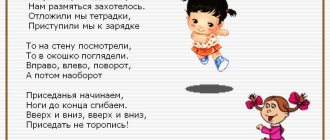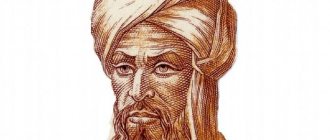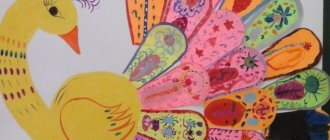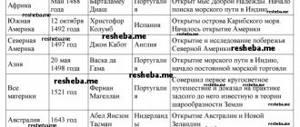COMPUTER 3 – D SIMULATION IN COMPUTER SCIENCE AND ICT LESSONS IN 9TH CLASS.
Chausova Tatyana Vladimirovna,
computer science and ICT teacher,
MBOU "Secondary school No. 46 in Belgorod",
Computer 3 –
D modeling in computer science and ICT lessons IN 9TH CLASS.
Currently, when studying objects in the surrounding world, we are forced to somehow display the results of the research, present a model of the object, in order, on the one hand, to present them in a form convenient for analysis, and on the other, to store and transmit them to space or time. When designing, creating something new, we initially form some image of this new thing - a model.
A model in a broad sense is an image (including conditional or mental) of an object or system of objects, used under certain conditions as their “substitute” or “representative”. A model is a simplified likeness of an object that reproduces the properties and characteristics of the original object or design object that interest us.
Modeling is the construction, improvement, study and application of models of real-life or designed objects (processes and phenomena).
There is a classification of modeling:
Three-dimensional computer graphics in films and computer games have become so realistic that today the viewer may not notice the line between virtual action and real footage. Visual effects and techniques for combining computer graphics with real video amaze the imagination and arouse many people’s interest in 3D modeling and animation.
The task of three-dimensional modeling is to describe objects and place them in the scene using geometric transformations in accordance with the requirements for the future image.
Computer 3-D modeling can be studied in the subject “Informatics and ICT”. It is advisable to master 3-D modeling using a program that is based on the author’s program N.D. Ugrinovich “Teaching the basic course “Informatics and ICT” in a primary school and is focused on teaching the subject according to the textbook Ugrinovich N.D. “Informatics and ICT, 9th grade” when studying the sections: “Coding and processing of graphic and multimedia information”, “Modeling and formalization”.
When studying the mentioned sections on the subject of computer science and ICT, you can use the COMPASS 3-D program, which is currently considered one of the most powerful tools for three-dimensional modeling. This software requires a license, but there are free analogues that are suitable for various operating systems: Windows, Linux, Mac OS X.
FreeCAD is a free multi-platform CAD program for creating 3D models that can be used in technical design, product design, as well as in other areas related to engineering work. The program is well suited for creating models for a 3D printer, as it supports the STL format.
Information Modeling. MODELS. SIMULATION. - presentation
Information Modeling
MODELS. SIMULATION.
BASIC CONCEPTS THE NEED FOR CREATING MODELS MODELING ADEQUACY OF MODELS TYPES OF MODELS DEPENDING ON THE FORM OF REPRESENTATION TYPES OF MODELS DEPENDING ON THE FORM OF REPRESENTATION TYPES OF MODELS DEPENDING ON TIME TYPES OF MODELS DEPENDING ON EXTERNAL DIMENSIONS TYPES OF MODELS DEPENDING ON EXTERNAL DIMENSIONS TYPES OF MODELS BY FIELDS OF KNOWLEDGE
1. BASIC CONCEPTS §Model §A model is an object that is considered instead of another object for some purpose. §EXAMPLES OF MODELS: l imitation (repetition) of a real object on a reduced scale: 4 globe (model of the globe); 4 teddy bear (model of a live bear); 4 doll (model of a living person); 4 toy cars (models of real cars). l real objects: human palm (airplane model); animals in medical research; radio engineering circuit (model of the human heart); swimming pool (space model). Content
2. THE NECESSITY TO CREATE MODELS §To preserve human life and health §Reducing the cost of material resources §To understand the essence of the object under study §To learn how to control the object §Forecasting consequences §For recreation §To solve applied problems Contents
3. MODELING §Modeling is the process of creating and using models. Content
4. ADEQUACY OF MODELS Adequacy is the degree of coincidence of the properties of the model and the modeled object. The model may also be NOT ADEQUATE. This means that the model does not correspond to the object it replaces. Content
6. TYPES OF MODELS DEPENDING ON THE FORM OF REPRESENTATION §A model is called a subject model if this model is a three-dimensional object. Examples: globe; human skeleton; Kids toys. §A model is called figurative-sign if this model is a description of the modeled object in the form of images and signs. Examples: photography; geography textbook; painting; computer game; description of a person in a work of art. Further
FIGURATIVE-SIGN MODELS §Mental model §Mental model is a mental image of a simulated object in human memory. Examples: 4image of a loved one in memory; 4 image of a room in the memory of the person living in it. §A documentary model is a description or image of a modeled object on paper, cardboard or other flat media. Examples: 4photo; 4 picture; 4card; 4description of the main character in a work of fiction. §Computer model §A computer model is a description or image of a modeled object in computer memory. Examples: computer games; computer performer "Draftsman", "Robot". Content
7. TYPES OF MODELS DEPENDING ON TIME §Examples: l dynamic: wind-up toys; l static: globe; Stuffed Toys; textbooks. If the model takes into account changes in the properties of the modeled object over time, then the model is called dynamic, otherwise static. Content
8. TYPES OF MODELS DEPENDING ON EXTERNAL DIMENSIONS, §A model is called scaled if it is obtained by increasing or decreasing the external dimensions of the modeled object and non-scale if the external dimensions of the model do not reflect the external dimensions of the modeled object. §Examples:: l Large-scale: globe; skeleton layout; drawing; map. : l Non-scale: doll; children's drawing. Content
9. TYPES OF MODELS BY FIELDS OF KNOWLEDGE §If a model belongs to any branch of knowledge, then it is named accordingly. If a model does not belong to any branch of knowledge, then it is called the simplest. §Examples: l protozoa (toys); l mathematical (equation for finding train speed, time, distance); l geographical (globe, map, plan); l chemical (model of the oxygen atom, carbon, chemical reaction formula); l, etc. Content





